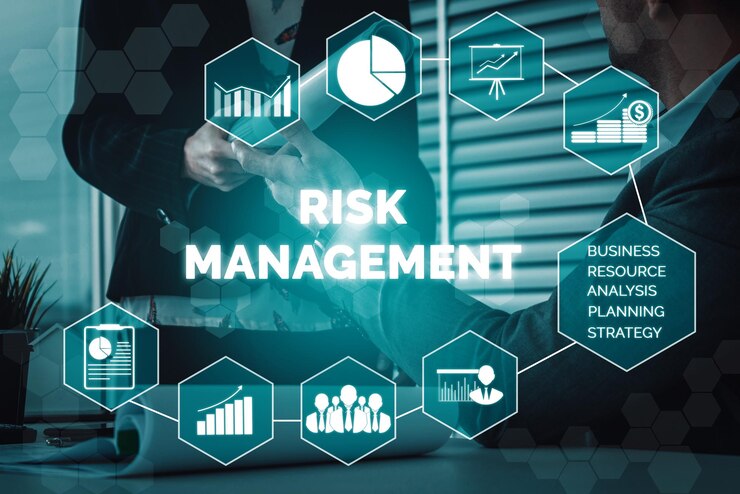I. Introduction to ISO 31000 Risk Management
A. Understanding Risk Management
Risk management is the systematic process of identifying, assessing, and mitigating risks to achieve organizational objectives. It involves analysing potential threats and opportunities, evaluating their impact and likelihood, and implementing strategies to minimize negative outcomes while maximizing opportunities for success. Effective risk management enables organizations to make informed decisions, enhance resilience, and achieve sustainable growth in an increasingly complex and uncertain business environment.
B. Overview of ISO 31000 Standard
ISO 31000 is an international standard that provides guidelines and principles for effective risk management practices. It outlines a framework for organizations to identify, assess, and manage risks systematically and consistently across all levels and functions. The standard emphasizes the importance of integrating risk management into decision-making processes, promoting a proactive approach to risk management that fosters resilience and agility in the face of uncertainty.
C. Importance of Implementing ISO 31000
Implementing ISO 31000 is crucial for organizations seeking to enhance their risk management capabilities and achieve strategic objectives with confidence. By adopting ISO 31000 principles and guidelines, organizations can establish a robust risk management framework that enables them to identify and address potential risks proactively, minimize losses, seize opportunities, and enhance stakeholder confidence in their ability to navigate uncertainty and achieve sustainable success.
II. Key Principles of ISO 31000 Risk Management
A. Risk Identification
Risk identification involves systematically identifying potential risks that may affect the achievement of organizational objectives. This process includes recognizing internal and external factors, events, or circumstances that could impact the organization’s ability to meet its goals. By identifying risks early, organizations can effectively prioritize and address them to minimize their impact on operations and outcomes.
B. Risk Assessment
Risk assessment entails evaluating the likelihood and potential impact of identified risks on organizational objectives. It involves analyzing the severity of consequences and the probability of occurrence for each risk, allowing organizations to prioritize risks based on their significance. Through risk assessment, organizations can gain insights into the potential threats and opportunities they face, enabling informed decision-making and proactive risk management strategies.
C. Risk Treatment
Risk treatment involves selecting and implementing strategies to address identified risks effectively. This may include avoiding, mitigating, transferring, or accepting risks based on organizational objectives, risk tolerance, and available resources. By implementing appropriate risk treatment measures, organizations can reduce the likelihood and impact of adverse events while maximizing opportunities for achieving desired outcomes.
III. Implementing ISO 31000 Risk Management
A. Establishing the Risk Management Framework
Establishing the risk management framework involves defining the policies, procedures, and structures necessary for effective risk management within the organization. This includes identifying risk management objectives, assigning roles and responsibilities, and establishing processes for risk identification, assessment, treatment, and monitoring.
B. Integrating Risk Management into Organizational Processes
Integrating risk management into organizational processes involves embedding risk management practices into day-to-day operations and decision-making processes. This includes incorporating risk considerations into strategic planning, project management, performance evaluation, and other key business activities to ensure that risk management becomes an integral part of organizational culture and governance.
C. Roles and Responsibilities of Stakeholders
Defining the roles and responsibilities of stakeholders is essential for ensuring accountability and effective collaboration in risk management efforts. This involves clearly delineating the responsibilities of individuals and groups involved in risk management, including senior management, risk owners, risk managers, and other relevant stakeholders, to ensure that everyone understands their roles and contributes to the success of risk management initiatives.
IV. Benefits of ISO 31000 Risk Management

A. Enhancing Decision Making
ISO 31000 risk management facilitates informed decision-making by providing organizations with a systematic approach to identify, assess, and manage risks. By considering potential risks and opportunities, decision-makers can make more informed choices that align with organizational objectives and priorities, ultimately leading to better outcomes and reduced uncertainty in decision-making processes.
B. Improving Organizational Resilience
Implementing ISO 31000 risk management enhances organizational resilience by enabling organizations to anticipate and adapt to changing circumstances effectively. By proactively identifying and addressing risks, organizations can mitigate the impact of adverse events and capitalize on opportunities, thus enhancing their ability to withstand disruptions, recover quickly from setbacks, and maintain continuity of operations in the face of uncertainty.
C. Building Stakeholder Confidence
ISO 31000 risk management builds stakeholder confidence by demonstrating that organizations are proactive in identifying and managing risks that could affect their performance and reputation. By implementing robust risk management practices, organizations can reassure stakeholders, including customers, investors, regulators, and employees, that they are committed to achieving their objectives responsibly and safeguarding their interests, thus fostering trust and confidence in the organization’s ability to deliver value.
V. Challenges and Solutions in Implementing ISO 31000 Risk Management
A. Resistance to Change
Resistance to change can hinder the successful implementation of ISO 31000 risk management. This may stem from fear of the unknown, reluctance to deviate from established practices, or concerns about increased workload. Addressing resistance to change requires effective communication, stakeholder engagement, and leadership support to foster a culture of openness, collaboration, and receptiveness to new ideas and processes.
B. Lack of Resources and Expertise
A lack of resources and expertise can pose significant challenges to implementing ISO 31000 risk management effectively. Organizations may face constraints in terms of funding, staffing, or specialized skills required for risk management initiatives. To overcome these challenges, organizations need to prioritize resource allocation, invest in training and development programs to enhance risk management capabilities, and leverage external expertise or partnerships where necessary.
C. Overcoming Cultural Barriers
Cultural barriers, such as resistance to change, siloed thinking, or hierarchical structures, can impede the integration of risk management into organizational processes and decision-making. Overcoming cultural barriers requires a concerted effort to promote a risk-aware culture that values transparency, collaboration, and accountability. This may involve leadership support, employee training, and fostering a mindset that views risk management as integral to organizational success.
VII. Future Trends in ISO 31000 Risk Management
A. Technological Innovations
The future of ISO 31000 risk management is likely to be influenced by technological innovations such as artificial intelligence, data analytics, and digital platforms. These technologies can enhance risk identification, assessment, and monitoring capabilities, enabling organizations to make more informed decisions and respond promptly to emerging risks and opportunities in a dynamic business environment.
B. Evolving Risk Landscape
The risk landscape is continually evolving, driven by factors such as globalization, technological advancements, and geopolitical shifts. Future trends in ISO 31000 risk management will involve adapting to emerging risks, including cyber threats, climate change, supply chain disruptions, and pandemics, and developing proactive strategies to mitigate these risks effectively while capitalizing on new opportunities for growth and resilience.
C. Shifting Regulatory Environment
The regulatory environment governing risk management is expected to evolve in response to emerging risks, changing stakeholder expectations, and advancements in risk management practices. Future trends may include increased regulatory scrutiny, new reporting requirements, and accountability in risk management processes. Organizations will need to stay abreast of regulatory developments and adapt their risk management practices accordingly to ensure compliance and maintain stakeholder trust.
VIII. Conclusion
A. Recap of Key Points
In conclusion, ISO 31000 risk management provides organizations with a systematic framework for identifying, assessing, and managing risks effectively. Key principles include risk identification, assessment, and treatment, which help organizations navigate uncertainty and achieve their objectives with confidence.
B. Importance of ISO 31000 Risk Management in Today’s Business Environment
ISO 31000 risk management is crucial in today’s dynamic business environment, where organizations face increasingly complex and interconnected risks. By implementing ISO 31000 principles, organizations can enhance decision-making, improve resilience, and build stakeholder confidence, ultimately contributing to sustainable success.
C. Call to Action: Embracing Risk Management for Organizational Success
As organizations navigate uncertainty and volatility, embracing risk management is essential for achieving long-term success. It is imperative for organizations to prioritize risk management, invest in resources and expertise, and foster a risk-aware culture that values transparency, collaboration, and continuous improvement. By embracing risk management, organizations can mitigate threats, capitalize on opportunities, and thrive in an ever-changing business landscape.




